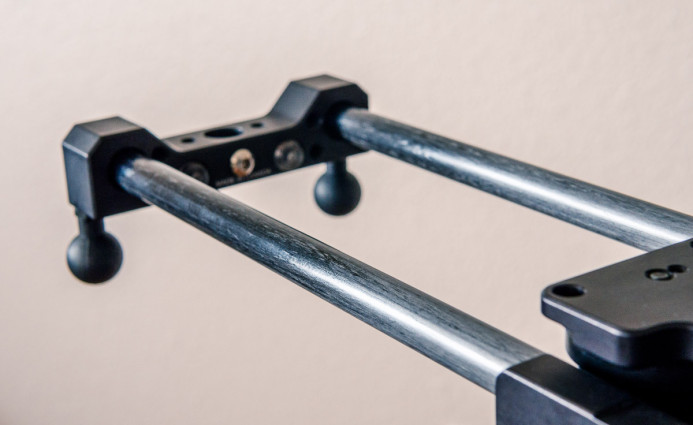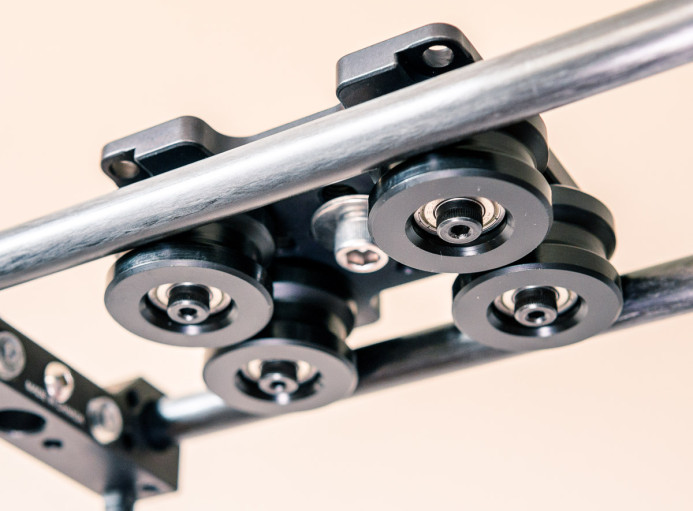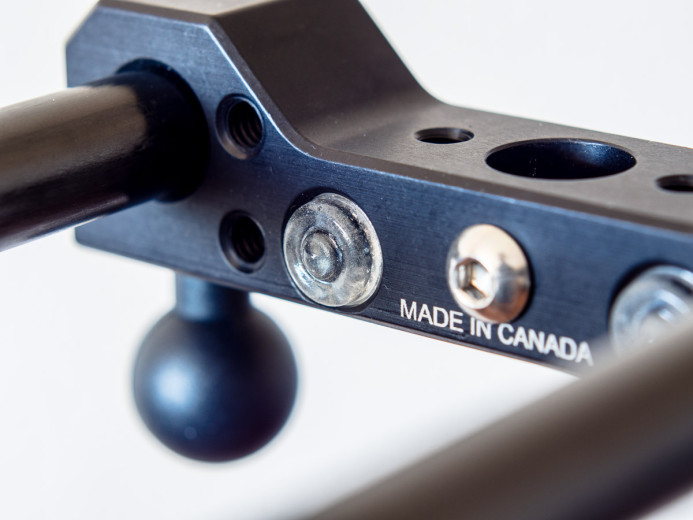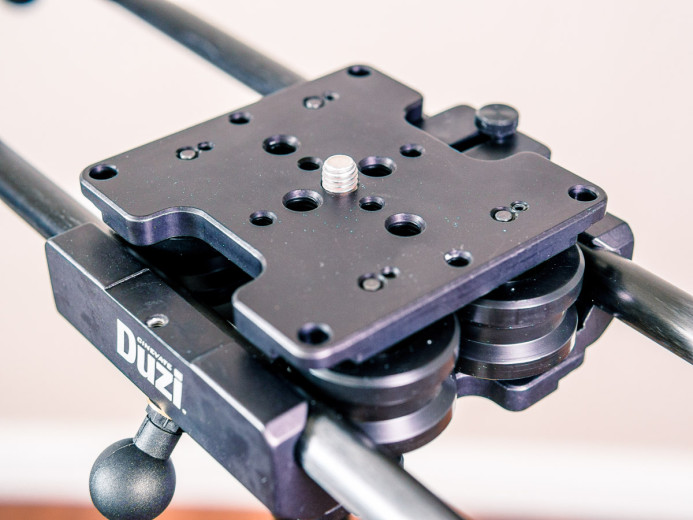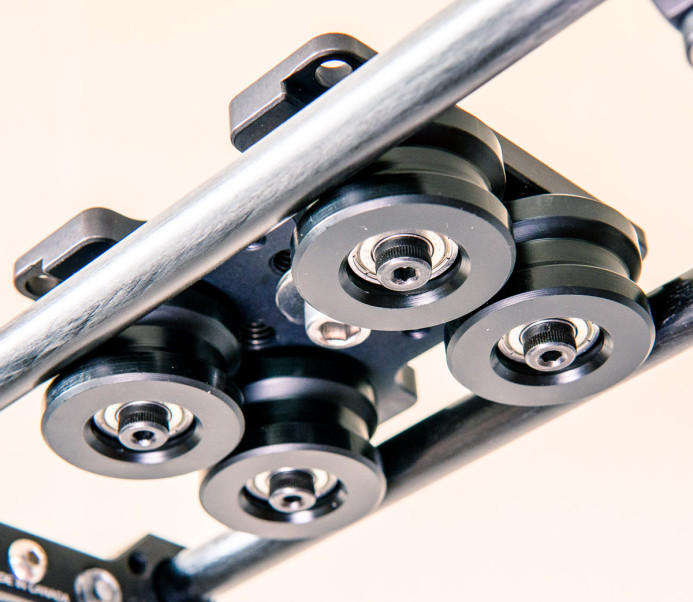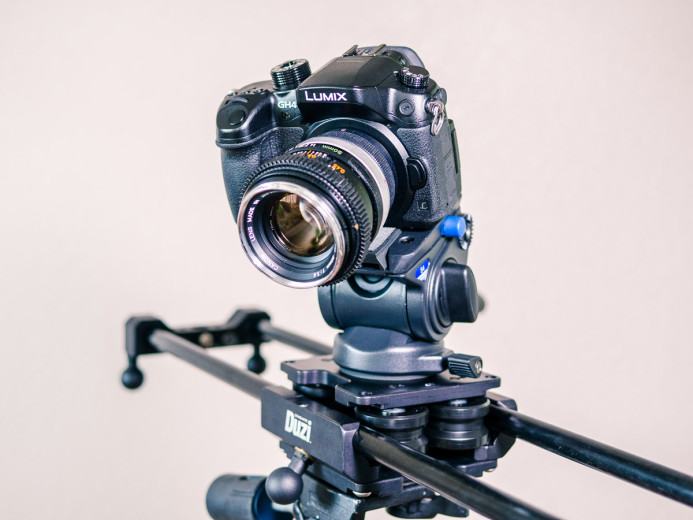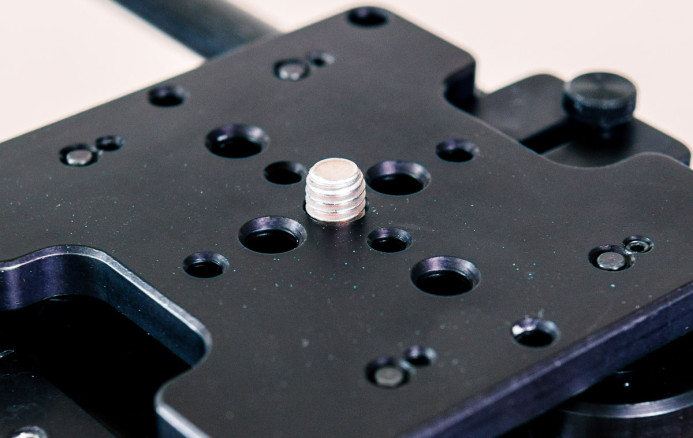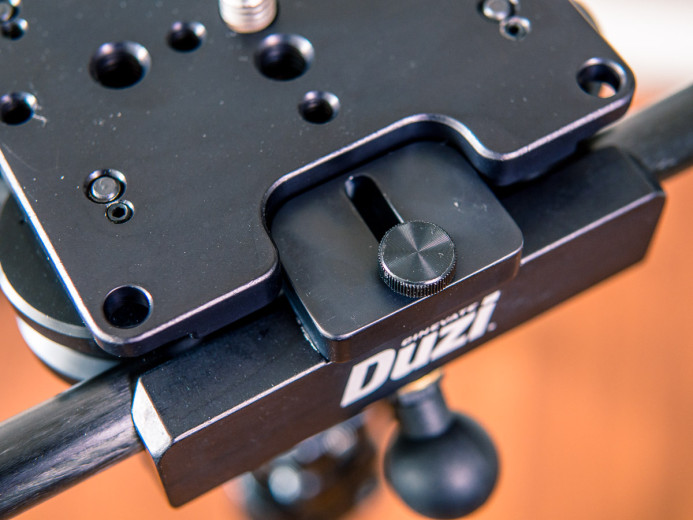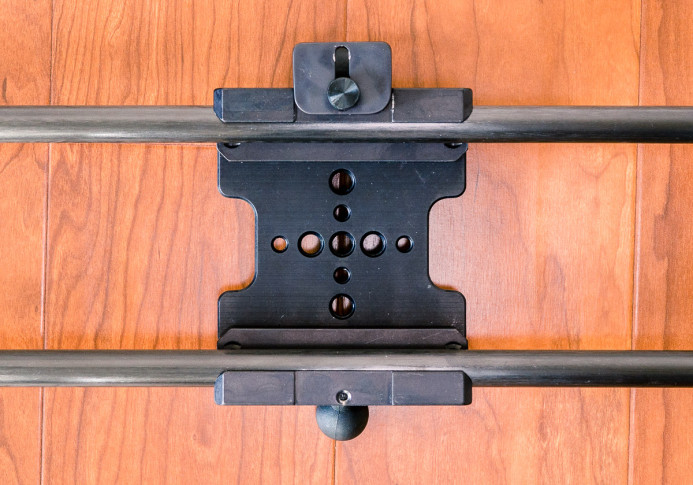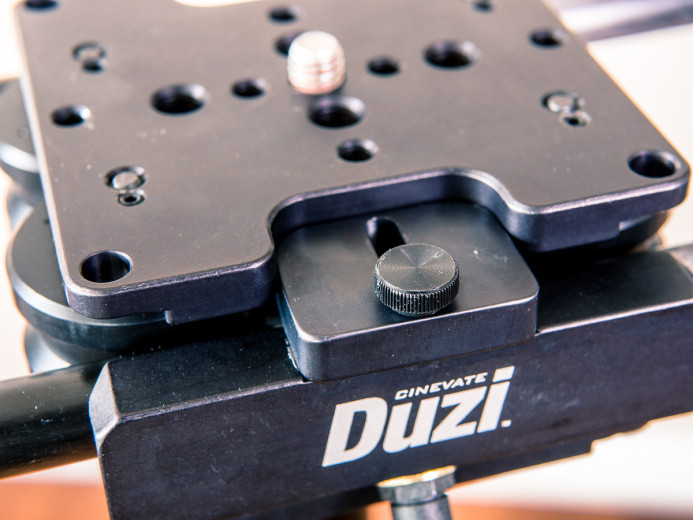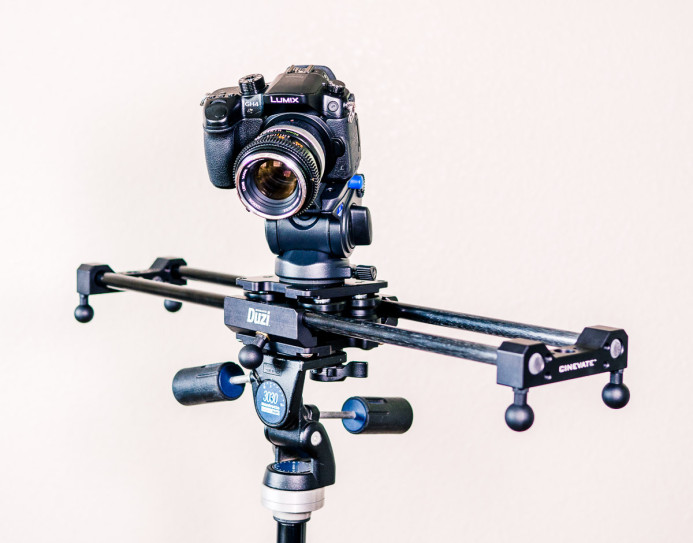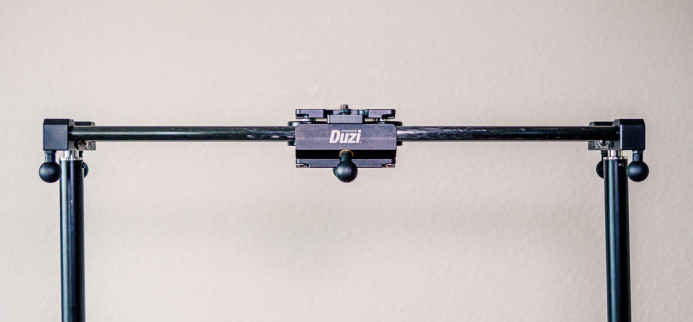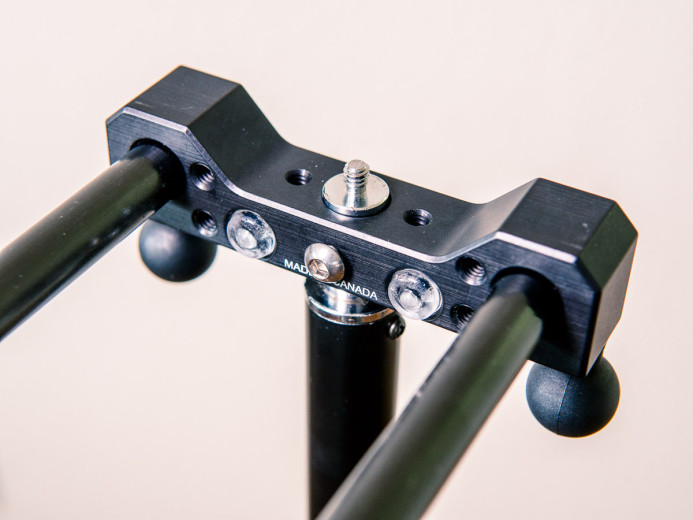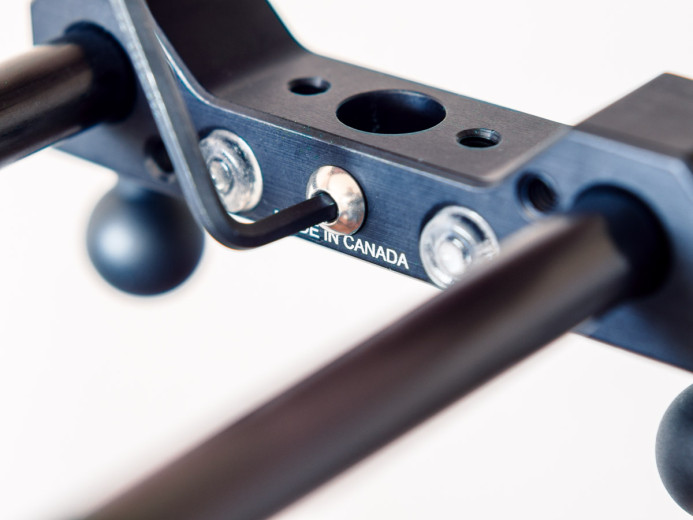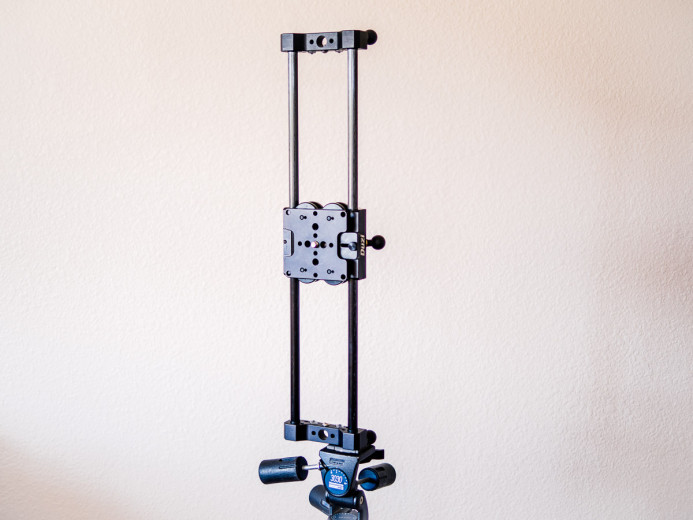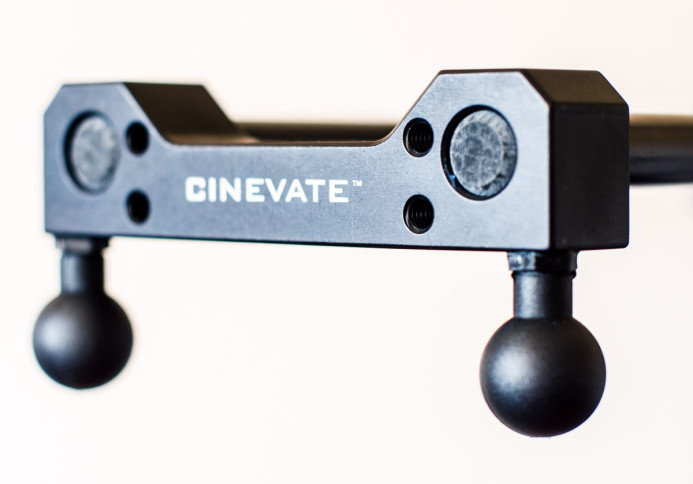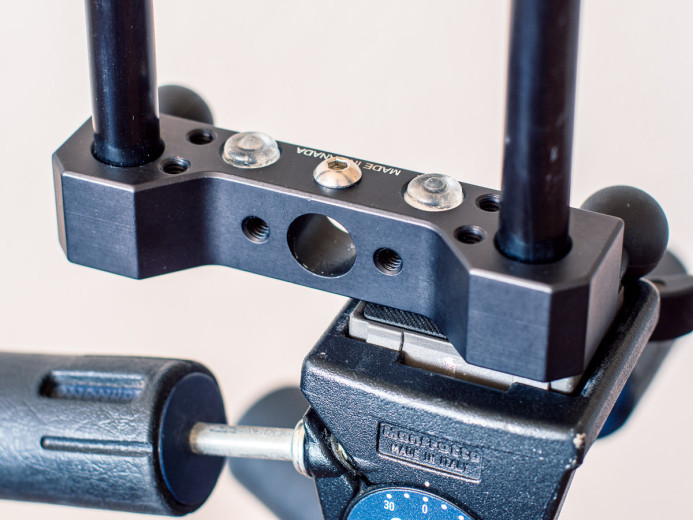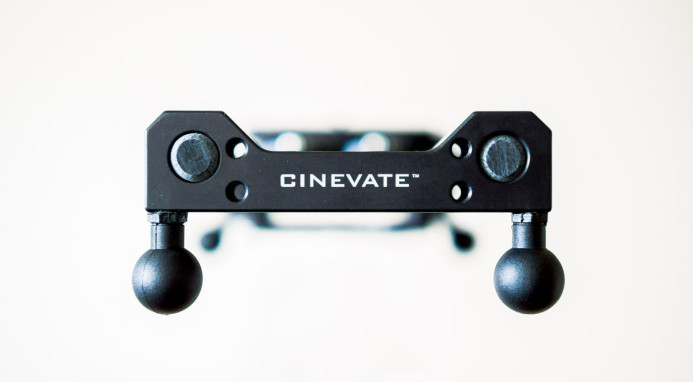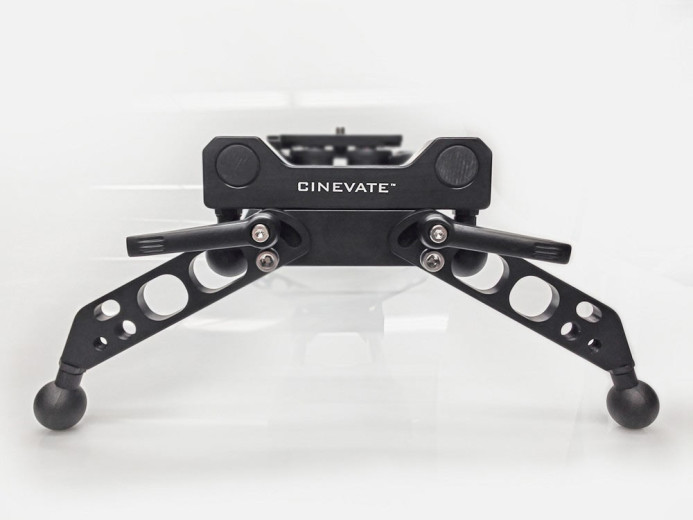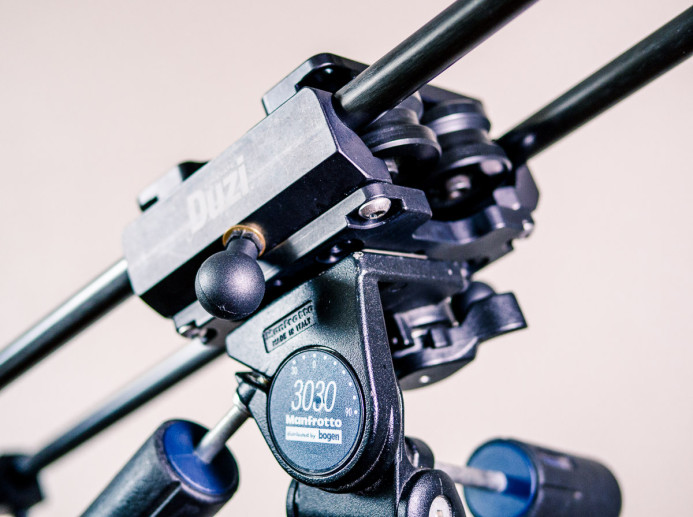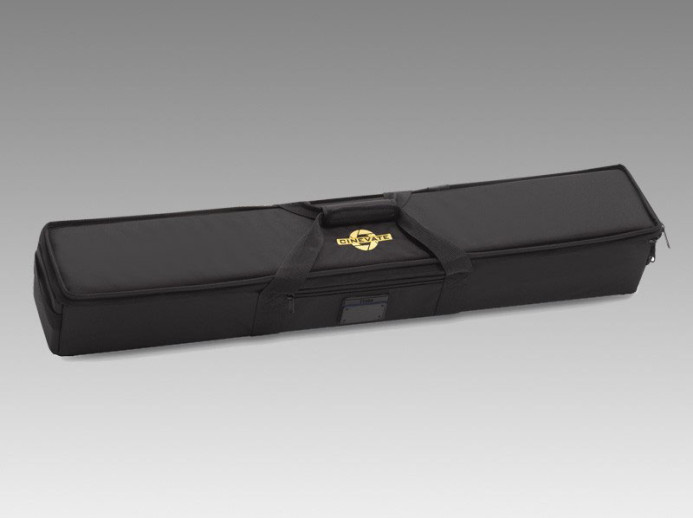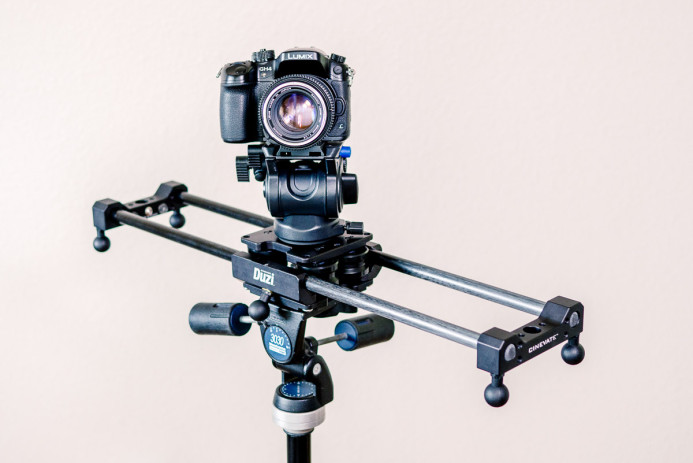Cinevate Duzi Slider Review
A camera slider needs to be uncompromisingly rigid and precisely built, but most of all, it needs to be really really smooth.
Today, we’re taking a look at whether Cinevate’s Duzi slider makes the cut. B&H sent the Duzi over, and we’ve been working with it in a variety of shoots for the past month.
Read on to see if the Duzi is the right slider for you.
Just the Stats Ma’am
- Length: 24in
- Travel: 16.75in
- Weight: 3.6lb
- Capacity: 75lb
- Track Type: Rod (Dual 15mm solid carbon rods)
- Carriage Brake: Yes (center only)
- Mounting Options
- Center: Yes
- Ends: Yes
- Vertical: Yes
- Expansion Options
- Panning: No
- Motorized: No
- Accessories
- All-terrain/Adjustable legs: No (optional $119)
- Carrying Case: No (Optional $150)
- Price: $399
Rod-Based Track
The Duzi’s track is made out of solid carbon 15mm rods, making it lightweight, but also very rigid. As a result, the track is solid with no flexing or bouncing that could interfere with getting the shot.
The Duzi is a compact slider, so the 24in rods aren’t the longest you’ll find. That said, a little bit of camera movement goes a long way, so we did not feel limited by the Duzi’s 16.75 inches of travel as long as we planned for it.
One of the things you’ll notice immediately, is that the Duzi’s track is fully exposed. This was a bit disconcerting at first because it meant that the track might be more easily damaged, which could affect the Duzi’s smoothness. However, the carriage’s wheels roll along the inside of the rods, where nicks are far less likely to occur.
In actual use, the Duzi’s exposed track turned out to be a benefit rather than a detriment. With most sliders, you need to clear debris that falls into the housing, especially when shooting outdoors. This was never an issue with the Duzi, because there’s nowhere for debris to build up.
This easy maintenance makes the Duzi a good option when shooting in places like the forest or the beach, where little objects (like pebbles or sand) could build up in another slider’s housing and damage the track.
Cinevate also added soft bumpers at each end of the Duzi’s track to allow for less jarring stops.
Heavy-Duty Carriage
The Duzi’s camera carriage feels quite solid. It might not be built out of a solid block of metal, but it sure feels like it is.
The carriage’s four large wheels only add to the heavy-metal vibe, but it’s not just for looks– these large wheels allow the carriage to smoothly glide across the track.
After using many other camera sliders, it’s impressive how the Duzi’s carriage slides along the track with a just light touch of the finger, even with a fully-loaded rig. On top of that, the carriage slides virtually silently on all but the fastest slides, making it possible record audio while shooting with the Duzi.
Like most sliders, the Duzi’s carriage has a standard 3/8-16 bolt for attaching a tripod head. The bolt does not rotate, so attaching a large tripod head can be a bit unwieldy. A knob that allowed you to rotate the carriage’s bolt rather than having to screw the entire tripod head on to the bolt would be more convenient– it feels a bit like spinning the house to change a light bulb.
Center-Mounted Brake
A carriage brake is essential for a slider, as it keeps the camera from sliding out of control when you’re moving the slider or setting up for a shot.
The Duzi has a simple, yet solid brake that keeps the carriage in place during transport.
The Duzi’s brake is essentially a block of metal that slides into notch in the carriage. It’s basic, but it holds the carriage securely in place.
The brakes only issue is that it is mounted on the center of the Duzi’s track. This means you need to bring the carriage back to the center whenever you need to lock it down. It’s not a huge issue, but it is inconvenient. A brake that allowed the carriage to be locked at any point on the track would make it much easier to move the slider on to the next shot.
Finally, the brake’s thumbscrew is quite short. It only takes a few turns to remove the thumbscrew completely, so be careful when loosening the brake so that you don’t accidentally lose it.
Multi-Position Mounting Options
The Duzi has several mounting options to orient the slider for different types of shots.
Center Mount
The most straightforward way to mount the Duzi is using its central mounting plate.
Supporting the slider at each end is more stable for long sliders, but central mounting works well for a compact slider like the Duzi. The mounting plate has a number of 1/4-20 and 3/8-16 threaded holes, allowing you to mount the Duzi to virtually any tripod head or set of sticks.
Pro tip: Use two bolts (e.g. a 3/8-16 and a 1/4-20) when mounting a tripod’s quick-release plate to the Duzi to avoid twisting and leaning during slides.
Drop-in Light Stand Mounts
If you need even more stability, the Duzi has holes at each end that allow you to simply drop it on top of a couple light stands.
Each hole also features a hex bolt for firmly securing the Duzi to the light stand’s stud.
This is a quick and simple way to mount the slider, but with a short slider like the Duzi, you may have to wrangle the stands a bit to keep their bases from getting in each other’s way.
Vertical Mount
The Duzi can also be mounted vertically using 1/4-20 holes on each end of the slider.
These holes are primarily meant for attaching the Duzi’s optional all-terrain legs, but they’ll work for a tripod plate as well.
That said, the mounting points are not centered on the end blocks, so it’s not as ideal as a dedicated hole for vertical mounting.
Non-Adjustable Feet
The Duzi’s 6 feet allow you to use the slider directly on the ground or any other stable surface.
Cinevate says the feet are adjustable, but they would not budge for us without risking excessive force. As a result, I would not depend on the feet if you’ll be using the Duzi on uneven surfaces.
Cinevate also sells optional all-terrain feet for true adjustability when using the Duzi directly on the ground.
Solid Build Quality
One of the most impressive things about the Duzi is how solid it is, despite being relatively lightweight.
The slider feels like it was made with precision– all edges line up cleanly and nothing is loose or rattles. As a result, the Duzi feels like a single solid unit.
Herculean Weight Capacity
Owing to it’s short length and solid build, the Duzi can support a massive 75lbs of gear.
We never needed to load that much weight on the Duzi, but considering the size of the carriage’s beefy wheels, I’m inclined to believe it can handle it. IN any case, no matter how much we loaded on the slider, the carriage remained very smooth.
It’s nice to know that the Duzi can handle setups with larger cameras like the Red Epic or ARRI Alexa just as easily as it handled rigs using compact cameras like the Panasonic GH4 or Sony a7S.
Case Not Included
The Duzi does not include a carrying case, so this is an additional expense you’ll have to factor in if you want to protect the Duzi when you’re on the move. This is a bit of a bummer, especially since its an ideal slider for using outdoors, where there’s more chance of damaging the slider by bumping it into something as it’s being transported.
Cinevate offers an optional carrying case for $150, though we didn’t have an opportunity to evaluate it.
Add-ons…No
The Duzi is an ideal for someone who wants a small and rock solid slider without a lot of bells and whistles. With the Duzi, what you see is what you get.
If you’re looking for a slider where you can add functionality with extra modules like motion control, a counterweight, or a crank, I would recommend looking elsewhere. The Duzi likely is not the right fit for you.
Solid, Compact, Smooth
Those are the three things that the Duzi embodies.
It’s solid— rigid, strong, and put together with precision. We never had to worry about any flexing or bouncing that could ruin the shot.
It’s compact— short enough to fit in a backpack, while still providing enough travel to create interesting camera movements.
It’s smooth— regardless of how much gear we loaded on the slider, the carriage’s robust wheels always glided silently and smoothly along the track with the touch of a finger.
If you’re looking for a straightforward slider that’s built like a tank, then the Cinevate Duzi is a solid option.
We’ll be looking at other sliders that provide additional functionality such as panning and motion control soon, so sign up for exclusive updates below to get the details before anyone else.
Related
- Cinevate Duzi Slider
- Cinevate Duzi All-Terrain Legs
- Cinevate Duzi Carrying Case
- Panasonic GH4
- Sony a7S
Stabilizing the Panasonic GH4
3-Axis Gimbals
- 3-Axis Brushless Gimbals: The Definitive Guide
- Five 3-Axis Brushless Gimbals for the Panasonic GH4
- Review: Varavon Birdycam 2
Sliders
- Stay on Track: Using Sliders with the Panasonic GH4
- 10 Things You Should Know Before Buying a Slider for the Panasonic GH4
- 6 Purpose-Built Sliders for the Panasonic GH4
- Cinevate Duzi Slider Review: Solid, Compact, Smooth
More Panasonic GH4 Guides
- Why You Should Be Excited About the Panasonic GH4
- Lenses for the Panasonic GH4 — Awesome glass for an awesome camera.
- Memory Cards for the Panasonic GH4 — Get the right memory cards for HD and 4K.
- Configuring the Panasonic GH4 for Video Production — Set the GH4 up for filmmaking.
- Rigging the Panasonic GH4 — Cages, Rigs, Components, Gear, and Reviews.
- Stabilizing the Panasonic GH4 — Tripods, Monopods, Sliders, 3-Axis Gimbals, etc.
- Maximizing the Panasonic GH4’s Audio Performance — Sound matters.
- Powering the Panasonic GH4 — Keep the GH4 shooting all day.
- Should you buy the YAGH for the Panasonic GH4?
- 6 Reasons Why DSLR Shooters Love the Panasonic GH4
